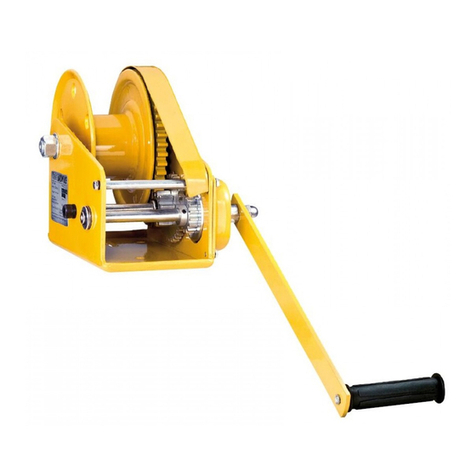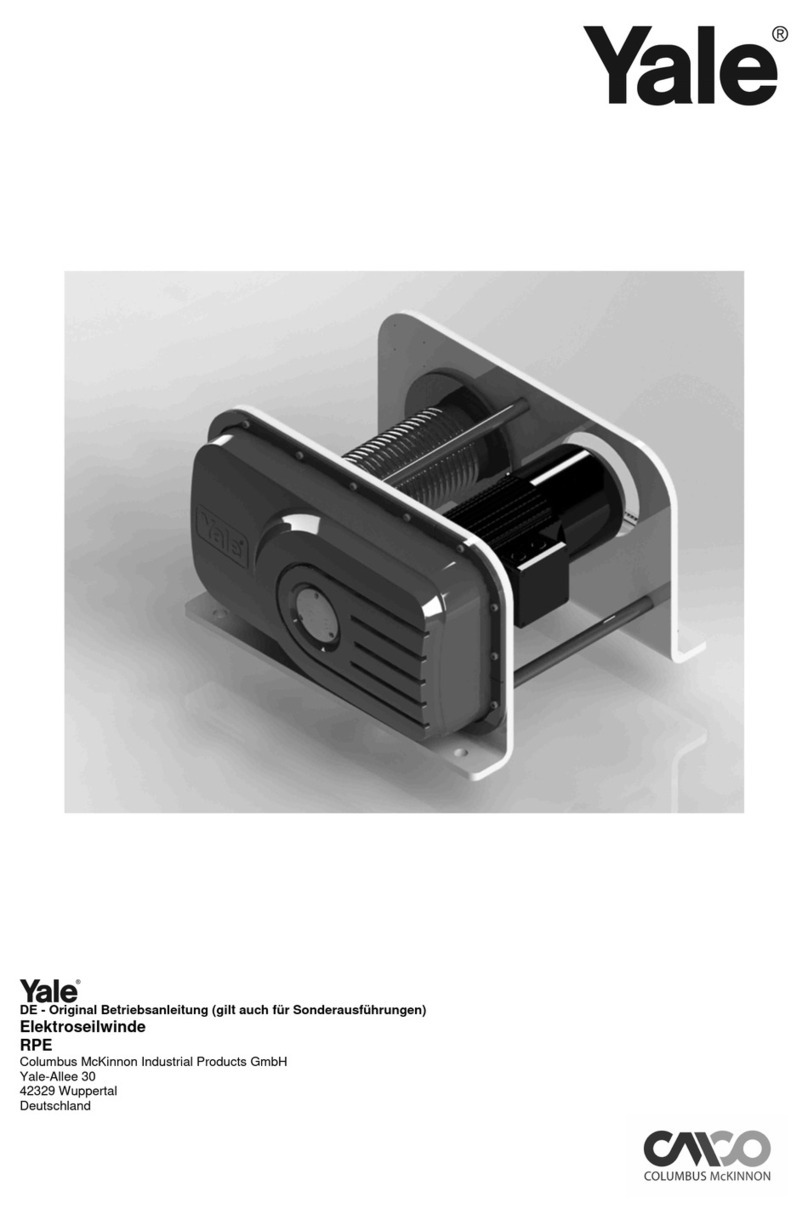
88
Mtrac endless winch
3.4 Yale control systems
A) Contactor control
Access for the mains cable and the control cable is provided on the
contactor control system. Always make sure that the control cable is
provided with a strain relief arrangement.
Important: This control system is only suitable for stationary operation
B) Control system with phase sequence monitoring
A CEE-16A plug is provided on the control system with phase sequence
monitoring for power supply to the endless winch. The control cable is
connected by means of a cable union. Always make sure that the control
cable is provided with a strain relief arrangement.
Motor and, if required, emergency-stop limit switch can be connected
to the control system by means of plug connectors.
C) Control system for two endless winches
A CEE-16A plug is provided on the control system for two endless
winches for power supply to the endless winches. The control elements
for operating the endless winch and the emergency-stop pushbutton are
arranged on the door of the switching cabinet of the control system. The
main switch of the endless winch is also located on the control system.
The two motors and, if required, emergency-stop limit switches can be
connected to the control system by means of plug connectors.
3.5 Power supply
The operating company is responsible for the connection of the Yale endless
winches. It is essential that the circuit diagrams included in the supply be
taken into account.
Complete the electrical connection of the winches in ac-
cordance with EN 60204-1or EN 60204-32. Always pull
the power plug before opening any control system.
1) Always check whether mains voltage and motor voltage match
Three-phase current: 400 V (3P+N+PE), 50 Hz with 16 A CEE plug
2) For min. cross sections of the supply cables, comply with the following
table!
Type of winch Required cable cross section in mm2
for cable lengths up to
25 m 50 m 100 m 200 m
1x YMT/F 5-9-M8 1,5 1,5 1,5 1,5
2x YMT/F 5-9-M8 1,5 1,5 1,5 2,5
1x YMT/F 5-18-M8 1,5 1,5 1,5 2,5
2x YMT/F 5-18-M8 1,5 2,5 4,0 6,0
1x YMT/F 6-9-M8 1,5 1,5 1,5 1,5
2x YMT/F 6-9-M8 1,5 1,5 1,5 2,5
1x YMT/F 6-18-M8 1,5 1,5 1,5 2,5
2x YMT/F 6-18-M8 1,5 2,5 4,0 6,0
1x YMT/F 8-9-M8 1,5 1,5 1,5 1,5
2x YMT/F 8-9-M8 1,5 2,5 4,0 6,0
1x YMT/F 8-18-M8 1,5 1,5 1,5 2,5
2x YMT/F 8-18-M8 1,5 2,5 4,0 10,0
1x YMT/F 10-9-M9 1,5 1,5 1,5 1,5
2x YMT/F 10-9-M9 1,5 2,5 4,0 6,0
1x YMT/F 10-18-M9 1,5 2,5 4,0 10,0
2x YMT/F 10-18-M9 1,5 4,0 10,0 16,0
4) Always use heavy rubber cables with strain relief!
5) Always use a cable sleeve or similar, if the drooping cable is longer
than 30 m!
6) If a generator is to be used for power supply, it must have at least 3
times the rated output of the winch motor.
3.6 Fitting the wire ropes
A) Preparation
Caution when handling wire ropes:
Always wear protective gloves.
1) Only use original Yale wire ropes.
Example for the marking of the Yale 8.4 mm rope
(tag on the thimble):
Front Rear
2) Make sure that the wire rope has the correct diameter and an ap-
propriate length.
3) Always unwind the wire rope orderly and without twisting (by also
turning the winder). Otherwise the wire rope may be rendered unus-
able as a consequence of rope slings.
CMCO
4269-10
8
20 M





























